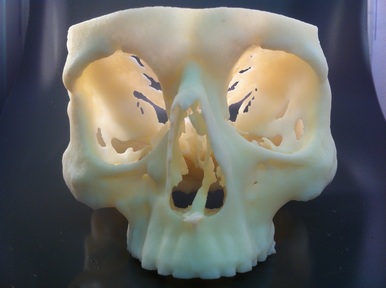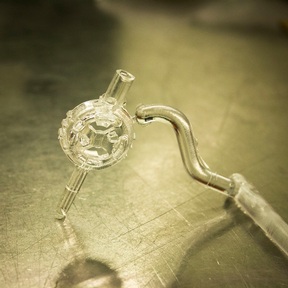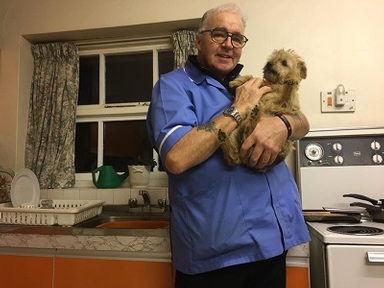3D printed prosthetics revolutionise healthcare
In recent years, there have been a number of technological advancements within the healthcare industry helping to improve medical procedures and patient outcomes, including advanced prosthetics and reconstruction techniques.
Innovations include: 3D printed pills, sensor controlled bionic limbs and 3D printed models to test implants before surgery and produce customised prosthetics, designed to fit perfectly with a patient’s body and requirements.
3D technology, also known as additive technology has so far proved to be hugely influential and inspirational in the healthcare industry and across other sectors.

Speaking about the impact 3D printed technology is having, head of medical solutions at 3D printing manufacturer, Stratasys, Scott Rader commented: “The medical industry is a field in which innovation and new technologies have a direct impact on improving processes, operation results and saving lives.
“As the healthcare industry takes larger and larger slices of the gross domestic product of countries, the question of cost will always be a factor associated with the obvious need to constantly increase innovation to improve efficiencies. In the medical field, 3D printing enables doctors to work faster, shorten patient theatre time and improve operation results.
“There have been many cases where patient diagnosis and treatments have been improved by 3D printing. The constant demand to improve efficiencies drives medical device manufacturers to produce products faster, more cost-effectively, with greater customisation and less intensive use of resources.
“Hospitals can test 3D printed medical device prototypes early in the process and feedback any required design iterations that can be made on-the-fly before final production. Subsequently, time-to-market of new medical devices is dropping significantly, meaning more patients can benefit from these new innovations faster than before.
3D printing is being used within the production of medical devices to improve lead times and precision
“We have seen a significant growth in the use of additive manufacturing during surgical planning and is fast-becoming an integral part of the process. Effectively performing and perfecting surgery on a 3D printed model prior to the actual procedure on the patient, not only can directly affect the amount of time patients spend on the operating table, but can also significantly improve success rates.”

Stratasys have more than 25 years’ worth of experience in producing equipment used for 3D printing, which can be used to produce functioning medical prototypes and large industrial applications within the aerospace and automotive industries.
Some of the most recent applications include work by scientists at the MRC Clinical Sciences Centre at Imperial College London who have produced large-scale 3D printed models of protein complexes as part of their study into how cells work.
Their findings could help one day to improve cancer treatments as current chemotherapy drugs kill cells and damage DNA in health cells causing mutations. By studying 3D printed life-size models, scientists hope to develop treatments to target cellular machinery that copies DNA instead of targeting human DNA itself, improving outcomes and reducing risk.
The same principle is being applied to how patients are treated when requiring extensive reconstruction surgery. Twelve UK hospitals are using Stratasys prints in collaboration with 3D printing specialist, Replica 3DM technology to take CT scans which can be used to create 3D models for surgeons to test implants on before operating to ensure accuracy and precision.
Additive manufacturing is being used increasingly often within the production of medical devices to improve lead times and precision. Using a combination of scans and additive technology, hospitals are now able to practise on 3D printed models prior to surgery.
For instance, surgeons are now able to use a 3D printed model of an implant to identify the exact shape, size and position required to repair the affected bone or joint prior to surgery, reducing the risk of complication, a consideration previously restricted to a CT scan.
The most commonly requested models include, jaw bones for facial reconstruction, elbows, models to rehearse hip replacements, forearms, and cranial plastics. Models have also been used in orthopaedics, spinal, neurology and ears, nose and throat wards, cutting down hospital costs and surgery time.
Additive manufacturing is becoming increasingly available outside of a healthcare environment
Mr Rader continued: “3D printing is not restricted to the operating table; a number of medical establishments are repurposing 3D printed models to train the next generation of doctors and surgeons on how to cope if things go wrong. For example, during kidney surgery, blood flow can only be stopped for 30 minutes, otherwise the kidney dies.
“Previously, surgeons would have to cut into the patient and use a tactical feel to locate the renal artery to ensure blood supply to the healthy portions of the kidneys wasn’t cut off. Now, surgeons can use a patient scan to create a 3D printed replica model, determine where the renal artery is and avoid this scenario. In some instances, we have seen hospitals manage to remove the tumour and cut the blood supply for only 21 minutes."

3D technology and additive manufacturing is becoming increasingly available to members of the public, outside of a healthcare environment. Communities such as Enabling the Future (e-NABLE), connect people in need of affordable prosthetics with those who have access to 3D printers. The community describe themselves as ‘a global network of passionate volunteers using 3D printing to give the world a helping hand’.
The project was established by two strangers, a prop maker in the US and a carpenter from South Africa, who worked together to create a small prosthetic hand for a child in South Africa, donating the device for free. Now an international community, 3D print enthusiasts, engineers, designers, artists, occupational therapists work together to provide 3D printed arms and hands for those who cannot afford expensive prosthetics.
Limbitless Solutions are another not-for-profit organisation that use their combined skills and additive manufacturing to produce advanced bionics for people in need of prosthetics. Executive director and college student, Albert Manero leads a team of five to develop and distribute new bionic arms. Limbitless say: “We believe that no family should have to pay for their child to receive an arm. Now we want to lead by example and encourage communities to innovate with compassion.”
Earlier this year, the Limbitless team worked with Microsoft social media campaign, ‘The Collective’ to upgrade a young boy’s prosthetic arm to match that of Iron Man. Mr Manero connected with Alex Pring through the e-NABLE network, which led to a meeting with ‘Iron Man’ Robert Downey Jr and Microsoft to present Alex with the arm, manufactured for free by the Limbitless Solutions team and the e-NABLE network.
Mr Rader continued: “As the application list continues to grow, the area of prosthetics is something that has been touched by the rapid advancement of 3D printing. The prosthetics themselves have been around for a long time, and, up until recently, were typically very rudimentary in their design and functionality. Now, advances in 3D printing have heralded a new era of inexpensive yet sophisticated prosthetics. This increased availability has seen patients ask for customised options and has led to the explosion of personalised medical aids and prosthetics.”
Latest Innovative Care News
 13-May-19
'Pink drink' brain cancer treatment rolled out across NHS in memory of Baroness Jowell
13-May-19
'Pink drink' brain cancer treatment rolled out across NHS in memory of Baroness Jowell
 25-Apr-19
Louis Tomlinson helps 83-year-old who lost wife to dementia complete bucket list
25-Apr-19
Louis Tomlinson helps 83-year-old who lost wife to dementia complete bucket list
 05-Mar-19
Care worker of the year inspires nine-year-old son to work in care
05-Mar-19
Care worker of the year inspires nine-year-old son to work in care
 12-Feb-19
Michael McIntyre's jokes tested to see if they stop elderly catching flu
12-Feb-19
Michael McIntyre's jokes tested to see if they stop elderly catching flu
 25-Jan-19
Ninety-year-old and his dog can stay together, thanks to care worker
25-Jan-19
Ninety-year-old and his dog can stay together, thanks to care worker